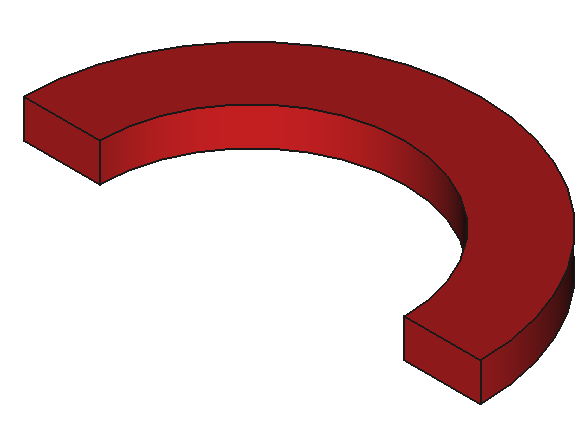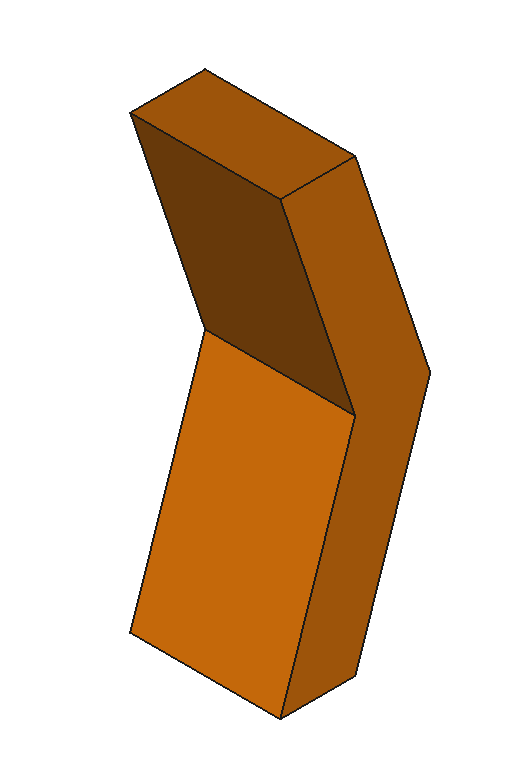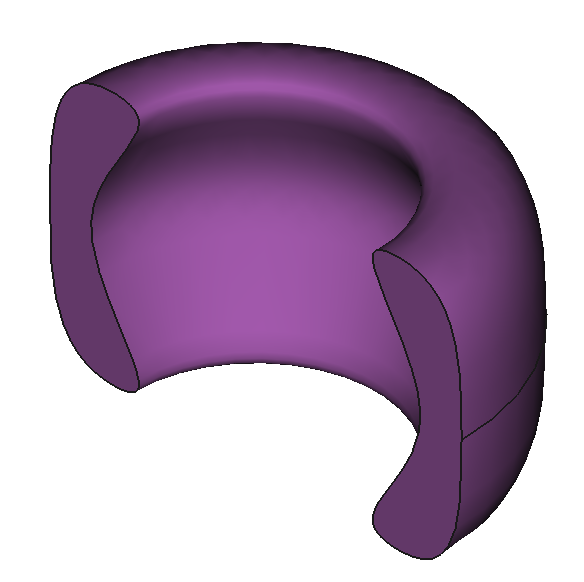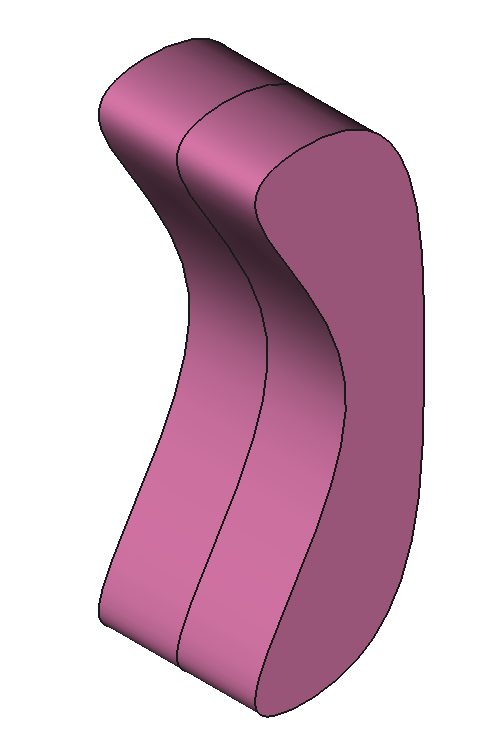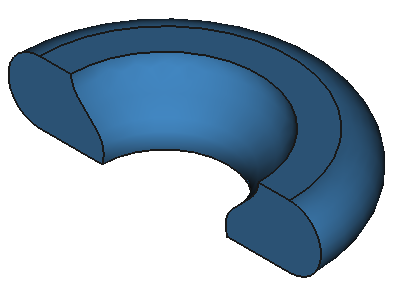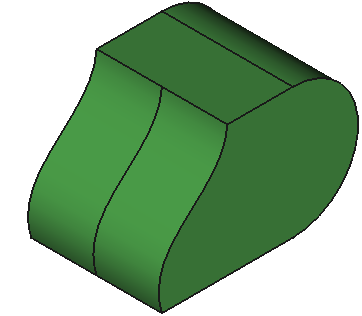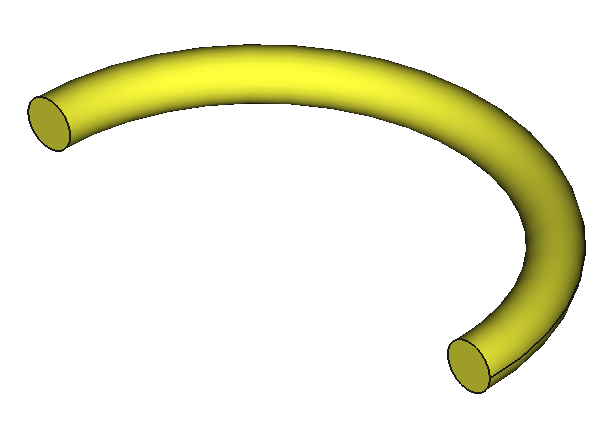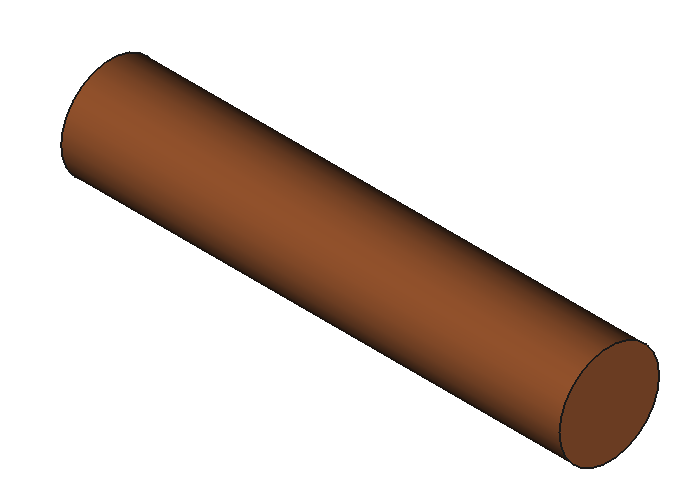Create 3D fusion reactor CAD models based on input parameters
Project description
Paramak
The Paramak python package allows rapid production of 3D CAD models of fusion reactors. The purpose of the Paramak is to provide geometry for parametric studies. It is possible to use the created geometry in engineering and neutronics studies as the STP files produced can be automatically converted to DAGMC compatable neutronics models or meshed and used in finite element analysis codes.
Documentation can be found on ReadTheDocs
Installation
To install the Paramak you need to have Conda, Cadquery 2 and Pip. If you have these three dependancies already then you can install the Paramak using Pip
pip install paramak
Detailed installation instructions can be found in the User's Guide.
Features
In general the Paramak takes points and connection information in 2D space (x,z) and performs operations on them to create 3D volumes. The points and connections can be provided by the user or when using parametric_shapes the points and connections are calculated by the software.
Once points and connections between the points are provided the user has options to perform CAD operations (rotate or extrude on different orientations) to create a 3D volume and boolean operations like cut.
The different families of shapes that can be made with the Paramak are shown in the table below. The CadQuery objects created can be combined and modified (e.g. fillet corners) using CadQueries powerful filtering capabilties to create more complex models (e.g. a Tokamak). The Tokamak images below are coloured based on the shape family that the component is made from. There are also parametric shapes which provide convenient fusion relevent shapes for common reactor components.
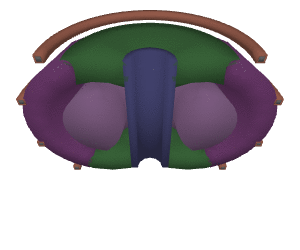
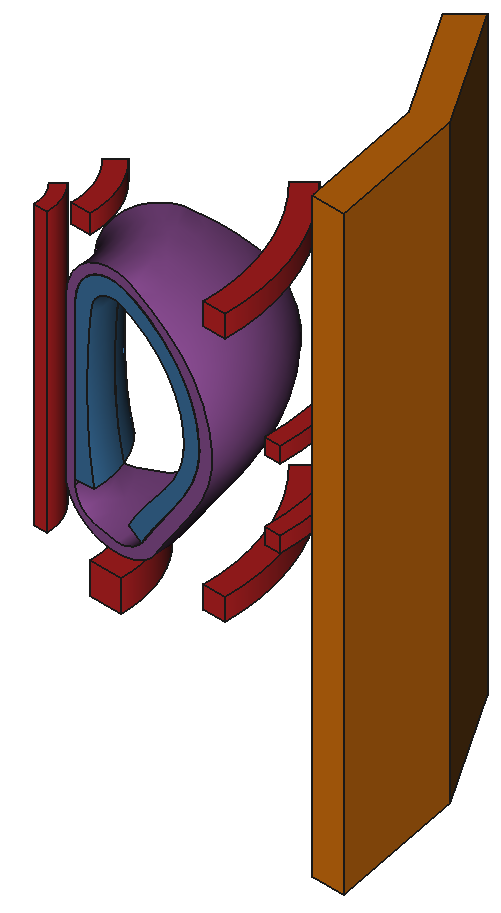
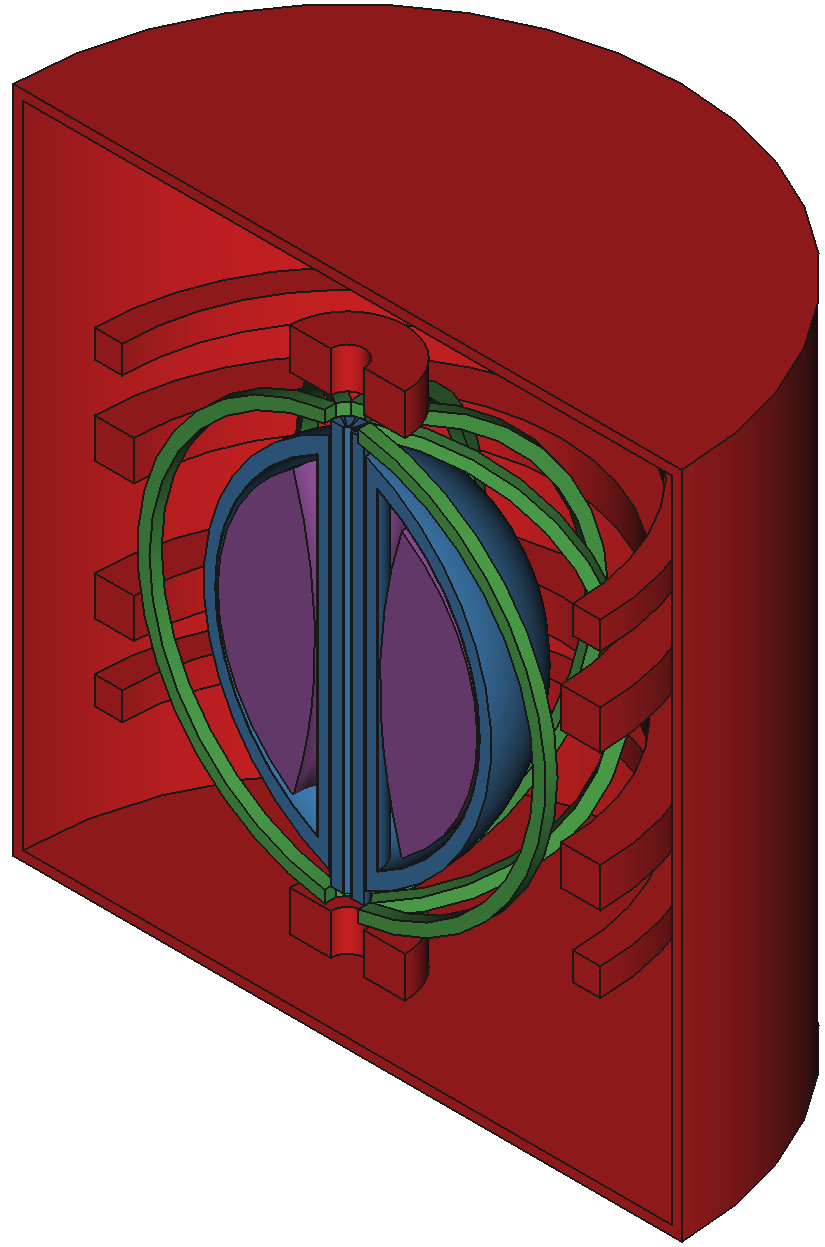
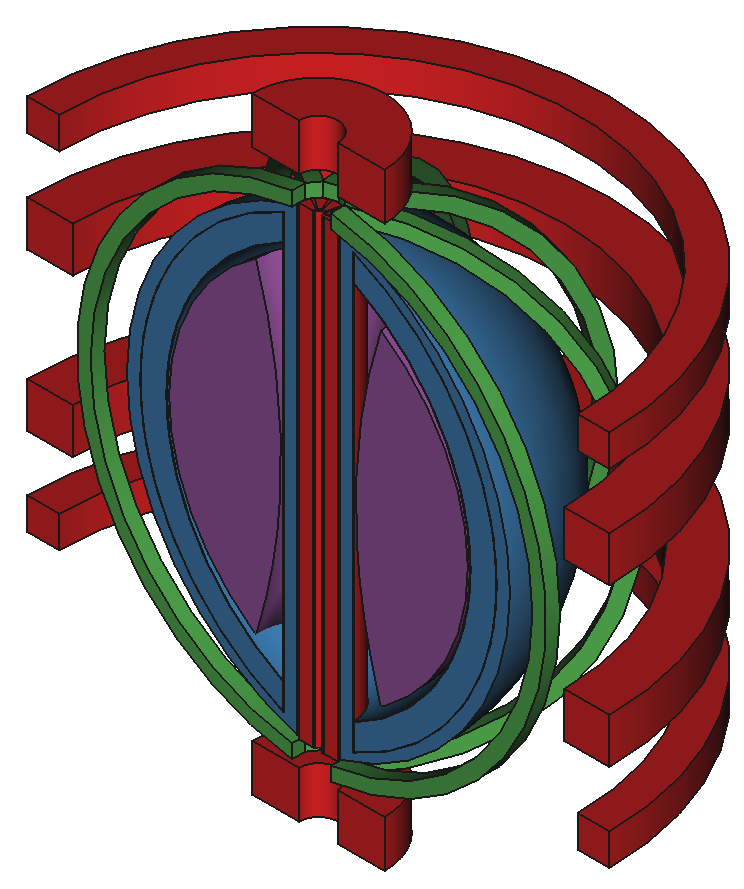
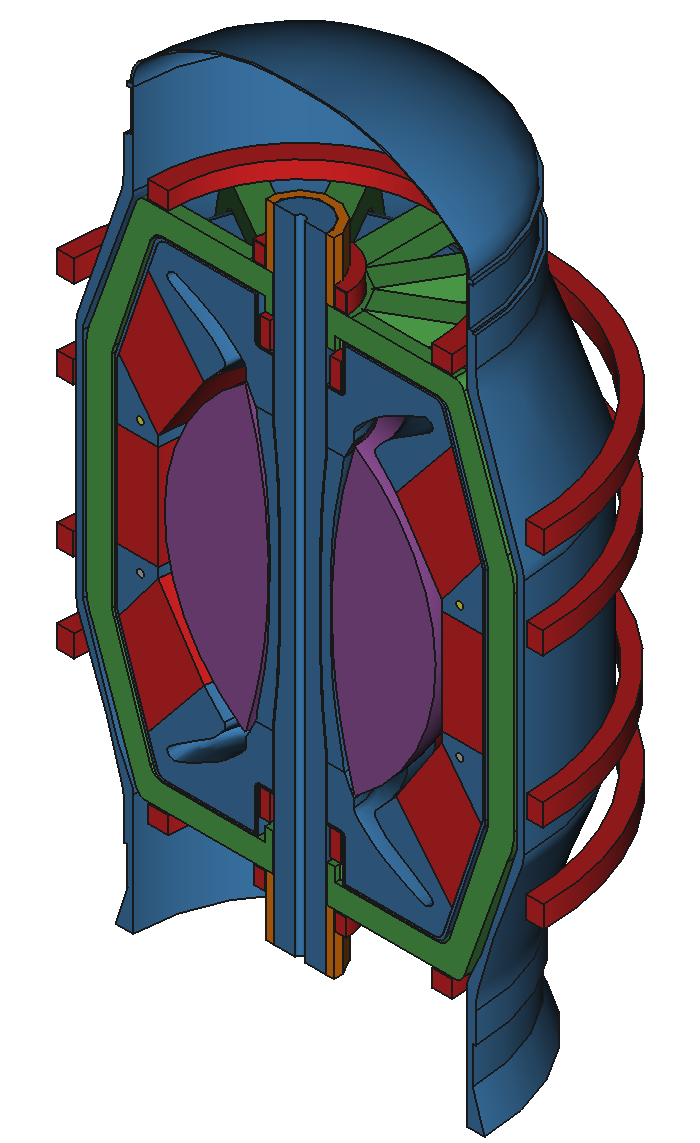
| Rotate | Extrude | |
|---|---|---|
| Points connected with straight lines | RotateStraightShape() |
ExtrudeStraightShape() |
| Points connected with spline curves | RotateSplineShape() |
ExtrudeSplineShape() |
| Points connected with a mixture (splines, straights and circles) | RotateMixedShape() |
ExtrudeMixedShape() |
| Circular shapes | RotateCircleShape() |
ExtrudeCircleShape() |
Example scripts
There are several example scripts in the examples folder. A good one to start with is make_CAD_from_points.py which makes simple examples of the different types of shapes (extrude, rotate) with different connection methods (splines, straight lines and circles).
Usage - shape creation
There are a collection of Python scripts in the example folder than demonstrate simple shape construction, visualisation creation and reactor construction. However here is a quick example of a RotateStraightShape
After importing the class the user then sets the points. Points should be a list of x,z points. In this case the points are connected with straight lines.
from paramak import RotateStraightShape
my_shape = RotateStraightShape(points = [(20,0), (20,100), (100,0)])
Once these properties have been set then users can write 3D volumes in CAD STP or STL formats
my_shape.export_stp('example.stp')
my_shape.export_stl('example.stl')
Creating a parametric shapes
Parametric shapes are wrapped versions of the eight basic shapes where parameters drive the construction of the shape. There are numerous parametric shapes for a varity of different reactor components such as center columns, blankets, poloidal field coils. This example shows the construction of a plasma shape. Users could also constructed a plasma by using a RotateSplineShape() combined with coordinates for the points. However a parametric shape called PlasmaShape can construct a plasma from more convenient parameters. Parametric shapes also inherit from the Shape object so they have access to the same methods like export_stp() and export_stl().
from paramak.parametric_shapes import PlasmaShape
my_plasma = PlasmaShape(major_radius=620, minor_radius=210, triangularity=0.33, elongation=1.85)
my_plasma.export_stp('plasma.stp')
Usage - reactor creation
A reactor object provides a container object for all the Shape objects created and allows operations on the whole collection of Shapes.
Import the Reactor object.
from paramak import Reactor
Initiate a Reactor object with an output folder.
my_reactor = Reactor()
Reactor inherites from dictionary so Shapes can be added to it in the same way you would add to a dictionary.
my_reactor.add(my_shape)
my_reactor.add(my_plasma)
A 3D rendering of the combined Shapes can be created.
my_reactor.export_3d_image('reactor.png')
A html graph of the combined Shapes can be created.
my_reactor.export_html('reactor.html')
Usage - neutronics model creation
First assign stp_filenames to each of the Shape objects that were created earlier on.
my_shape.stp_filename = 'my_shape.stp'
my_plasma.stp_filename = 'my_plasma.stp'
Then assign material_tags to each of the Shape objects.
my_shape.material_tag = 'steel'
my_plasma.material_tag = 'DT_plasma'
Now add the Shape objects to a freshly created reactor object.
new_reactor = Reactor()
new_reactor.add(my_shape)
new_reactor.add(my_plasma)
The entire reactor can now be exported as step files. This also generates a DAGMC graveyard automatically.
my_reactor.export_stp()
A manifest.json file that contains all the step filenames and materials can now be created.
my_reactor.export_neutronics_description()
Once you step files and the neutronics description has been exported then Trelis can be used to generate a DAGMC geometry in the usual manner. There is also a convenient script included in task 12 of the UKAEA openmc workshop which can be used in conjunction with the neutronics description json file to automatically create a DAGMC geometry. Download this script and place it in the same directory as the manifest.json and step files. Then run the following command from the terminal. You will need to have previously installed the DAGMC plugin for Trelis.
trelis make_faceteted_neutronics_model.py
Alternativly to run this without the GUI in batch mode type.
trelis -batch -nographics make_faceteted_neutronics_model.py
This should export a h5m file for use in DAGMC.
Further information on DAGMC neutronics can be found here and information on OpenMC can be found here. The two codes can be used together to simulate neutron transport on the h5m file created. The UKAEA openmc workshop also has two tasks that might be of interest task 10 and task 12.
Project details
Release history Release notifications | RSS feed
Download files
Download the file for your platform. If you're not sure which to choose, learn more about installing packages.










